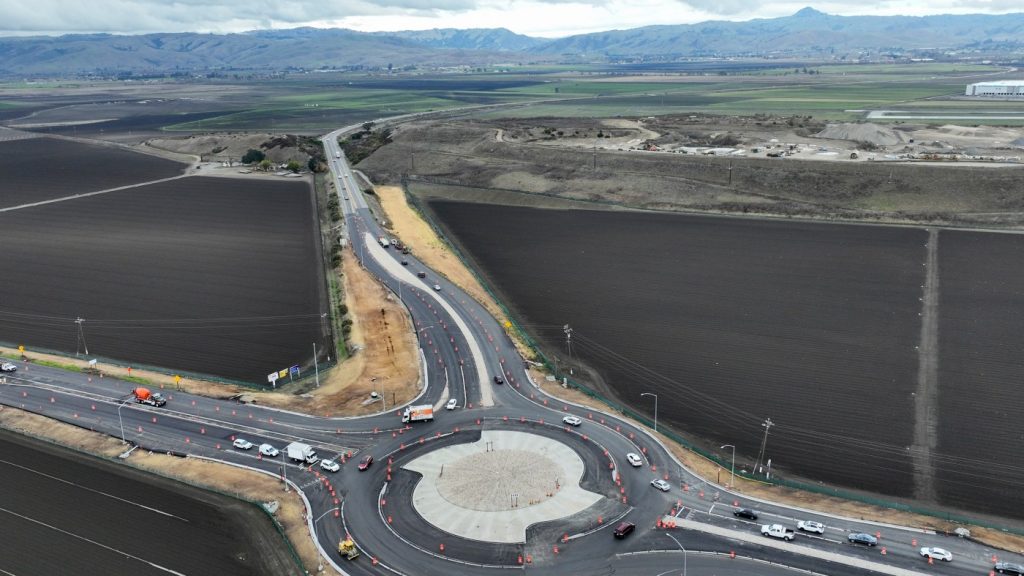After nearly two years of work, construction on the first ever turbo roundabout in California is complete in San Benito County. Now, commuters are using the finished pinwheel-shaped rotary for the first time, and while some say the experience has gone smoothly, others find the new traffic pattern confusing.
Caltrans built the turbo roundabout at the intersection of highways 25 and 156 near Hollister – a notoriously dangerous spot and the site of more than twice as many accidents as similar intersections in the state, resulting in multiple injuries. In particular, an unusual number of rear-impact and T-bone collisions have occurred there.
“Where we’ve installed roundabouts, there typically is a learning curve that we see in the first few weeks. Once everyone becomes more familiar with how a roundabout works, the concerns cease — as do the collisions,” said Jim Shivers, a spokesperson for Caltrans.
The turbo roundabout is considered a potentially safe solution to deal with the the high volume of traffic in the area. It consists of a three-lane rotary with dividers that prevent drivers from changing lanes once they enter the roundabout. While the design is popular in Scandinavia for reducing the number and severity of accidents, the turbo roundabout is only the second in the United States.
Construction for the project began in Summer 2022 and cost $10.9 million to complete, funded by the State Highway Operation and Protection Program, with the final lines and signage completed over the last few weeks.
“We’re glad it’s finally finished,” said Manny Arroyo, who lives in Hollister and commutes to Gilroy for work. While he had no complaints about the circle, he noted that many who are confused with the intersection slow down and clog up traffic. “People still have to get used to it.”
Christopher Hill, who commutes from Gilroy to Hollister to work had a similar experience. “I thought it was going to be a (mess),” he said, adding that he had seen multiple accidents before signage and lines were complete. But now that the marking for the roundabout is in place, Hill said the roundabout has “extremely helped” his commute, saving him around five minutes of travel. “It is actually going really quick.”
However, multiple people said they had seen others taking back roads to avoid the intersection, and for others it has caused confusion.
Toni Bowles, who commutes to Gilroy from Hollister, said that getting used to the new pattern with multiple lanes of traffic is making her “nervous” and she wishes she had seen an instructional video or graphic before navigating the round about for the first time. “I think I’m a good driver, but I feel like I could still use some help,” she said.
Caltrans did release instructional videos on the subject in both English and Spanish last fall as part of an effort to educate the public on how to use the roundabout.
While Shivers said he expects the learning curve to pass “very quickly”, he recommends that drivers “proceed with caution” and refer to the videos for more information for now.


